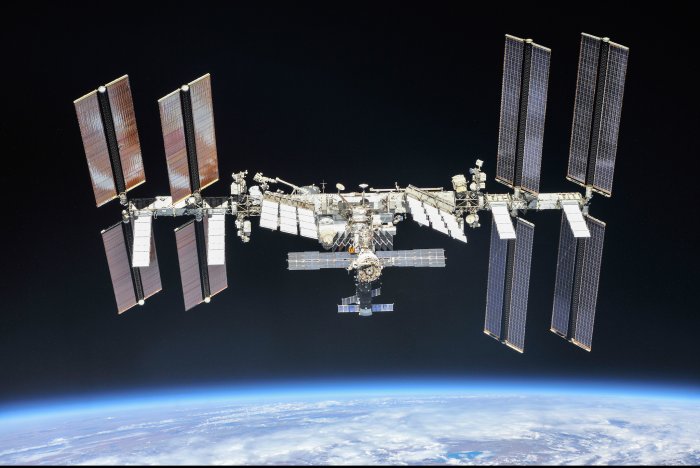The next SpaceX launch to the International Space Station will include experiments involving water bears, squid and kidney stones, NASA scientists said on Wednesday. File Photo courtesy of NASA/Roscosmos
May 26 (UPI) -- SpaceX's 22nd cargo resupply mission, slated to launch no earlier than June 3, will see several unique science experiments -- involving water bears, baby squids and kidney stones -- ferried to the International Space Station.
Like so many experiments before them, the bulk of the experimental setups being carried aboard SpaceX CRS-22 are designed to illuminate the health risks facing astronauts.
One of these will use tardigrades, or water bears, to do so.
"Tardigrades are renown for their ability to withstand a number of extreme stresses," Thomas Boothby, an assistant professor of molecular biology at the University of Wyoming and the principal investigator on the Cell Science-04 experiment, told reporters during a press call on Wednesday.
Tardigrades can survive absolute zero and boiling water, withstand intense air and water pressures and persist in a dormant state for up to 30 years without food and water.
"Importantly for this mission, they've been shown to survive and reproduce during spaceflight and can even survive prolonged exposure to the vacuum of outer space," Boothby said.
For the experiment, scientists are planning to conduct both short-term and long-term tests, exposing single generations of water bears, as well as multiple generations, to the stresses of spaceflight, such as microgravity and radiation.
"We're going to be recovering those animals and looking at what genes they've turned on and off while aboard the ISS to get a sense of how they're coping with the stresses," Boothby said.
A separate experiment, called UMAMI, will use another tiny creature, baby bobtail squids, Euprymna scolopes, to study the impacts of spaceflight and microgravity on animal-microbe symbiosis.
"I'm very interested in how beneficial microbes communicate with animal tissues in space," said UMAMI principal investigator Jamie Foster.
"It's really important to understand how those microbes and their relationship with tissue and each other cause the microbiome to change in the space environment," Foster said.
Healthy adult squid maintain a symbiotic relationship with the bacterium Vibrio fischeri. For the UMAMI experiment, several dozen immature bobtail squid -- all of which will be bacteria-free -- will be flown to the International Space Station.
Once onboard, the bacteria will be introduced to the squid paralarvae and allowed to colonize their light organs, an extra set of primitive eyes.
Researchers will monitor the onset of symbiosis for 12 hours before freezing the squid for tissue analysis back on Earth.
Astronauts face a variety of health challenges in space, one of which is an increased risk of kidney stones.
"On Earth, gravity helps maintain bone structure, and so bones tend to demineralize in space," said principal investigator Ed Kelly, associate professor of pharmaceutics at the University of Washington.
"Where does that calcium phosphate and magnesium go? It goes to the kidneys. This is one of the big reasons why astronauts are so susceptible to kidney stones," Kelly said.
But studying kidney stone formation on Earth is complicated by gravity. In lab experiments, kidney stones tend to sink to the bottom of solutions as they grow, complicating observation and measurement efforts.
Kelly and his research partners hope the kidney cell models -- installed on 3D tissue chips -- will help them solve this problem.
"We think the microgravity environment will allow us to model how kidney stones form and what can be done to prevent them from forming," Kelly said.
Additionally, SpaceX will carry experiments testing robotic arm and solar panel technologies, as well as more resilient cotton crop varieties, according to NASA.
The International Space Station is photographed by Expedition 56 crew members from a Soyuz spacecraft after undocking on October 4, 2018. NASA astronauts Andrew Feustel and Ricky Arnold and Roscosmos cosmonaut Oleg Artemyev executed a fly-around of the orbiting laboratory to take pictures of the space station before returning home after spending 197 days in space. Photo courtesy of NASA/Roscosmos
















